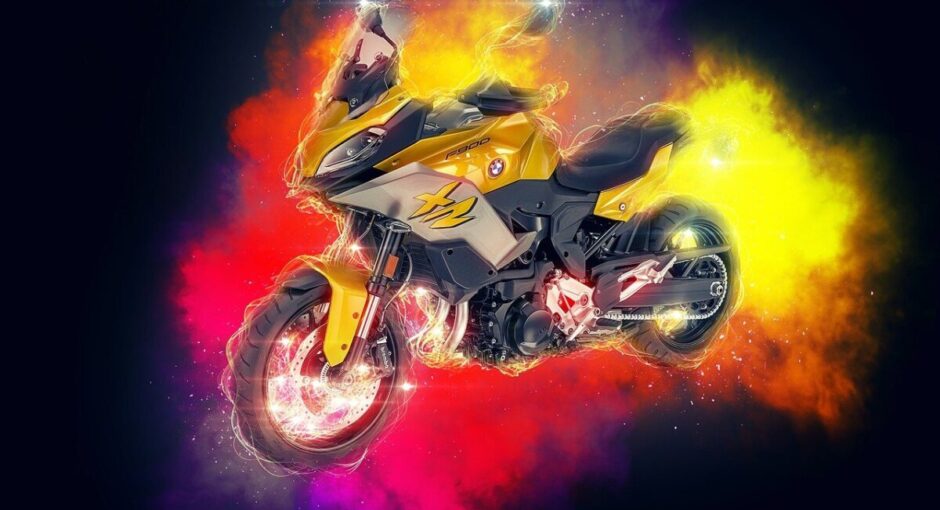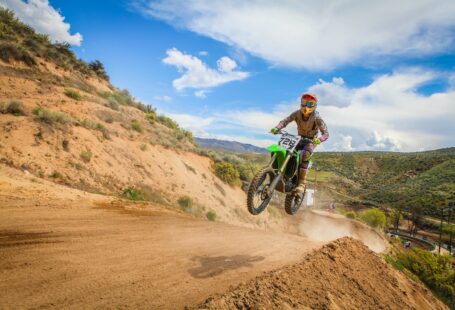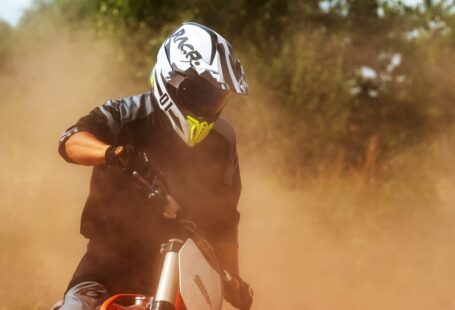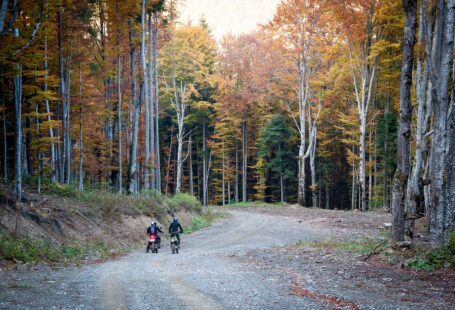The way you position your body on the motorcycle can have a great effect on your concentration and make the difference between panicking/freezing in the middle of a turn or feeling comfortable/confident to complete the same turn
Over the last few years I have heard many riding coaches talk about the Survival Reactions that cause riders to “freeze” and crash way too often when they enter a corner and their brains somehow go into “panic mode”. All those coaches say that those Survival Reactions are bad but natural, that they’ll be there in every turn… that you just have to learn how to “deal with them”.
To me, that is wrong. Why “fight” your survival instincts when you can avoid triggering them in the first place? That “freeze” can be prevented altogether!
The Theory
Q: What is panic?
A: Panic is a sudden sensation of fear which is so strong as to dominate or prevent reason and logical thinking.
When your brain feels in danger, it panics. When your brain panics, it reacts with primal (and involuntary) survival reactions. In a motorcycle, these primal reactions can make you crash.
Q: What are the most common causes of panic when you are cornering on a motorcycle?
A: A “sense of lack of balance” and an “erroneous sense of speed”.
1. Help your brain sense that your body is in balance
Q: How does the brain react to a lack of sense of balance?
A: It automatically panics and tells your eyes to look towards the “point of impact” and your body to prepare for the impact.
No matter what else is going on around you, once your brain has focused on that point of impact, it will remain focused there until the impact actually happens. This phenomenon is commonly known as target fixation.
I did my own experiments. Over a few days I approached friends and family members when they were standing still and looking forward and just pushed them to one side (no, I did not push my mom nor my wife). In a split second their brains went to survival mode and automatically turned their sight to the “point of impact” and prepared their hands for the landing.
No, nobody fell (I did not push them that hard) but I confirmed my theory that when someone feels out of balance he instinctively prepares for the impact; and looking towards the point of impact is the first thing we all do.
When your body feels out of balance, survival reactions always come first.
Q: How can avoid feeling off-balance when I’n riding through a turn?
A: By keeping your body aligned with your (ever changing) center of gravity at all times.
When you’re riding on your bike at a constant speed on a straight line, the only G force acting on you is the Earth’s gravity itself. As long as you are sitting straight on your saddle you will not feel like you are being thrown to one side or the other of the bike, you’re only being pushed towards the saddle and your brain feels safe and secure. But as soon as you enter a curve everything changes; the centrifugal force of the turn will try to push your body and throw you to the outside of the curve. The faster the curve, the faster the sidewise G force.
So now we have two G forces acting on you: One pushing you down and one pushing you to the side. You cannot avoid these G forces, but you can align your body so it is pushed safely against the saddle and not to one side or the other of the bike. If you allow your body out of the balance of these two combined forces your brain will automatically feel in danger and go into panic mode.
The Carousel and the Riddle Example
Imagine that you are asked to resolve a riddle while you are sitting on one of those old fair carousels and… all the sudden, the carousel starts spinning very fast.
If you are sitting upright on your horsey, your brain will not be able to concentrate on the riddle because your body will feel off-balance and your brain will only be focused on surviving. You will only be thinking about holding on to your horse and avoid falling from it. The survival reactions have been triggered and your concentration has been compromised.
On the other hand, if you lean your body to the inside of the horse and align yourself with the centrifugal force of the spinning carousel, you will feel much more comfortable, safe and relaxed, and you will be able to concentrate on the riddle you were solving.
The same happens when you’re cornering on a motorcycle. If you align your body with the turn in advance, you will help to avoid triggering any panic/survival reaction and remain fully concentrated on riding safely through the turn.
PRACTICAL TIP: You don’t necessarily have to “move” around your seat like a racer but transferring your body weight to the butt cheek that’s on the inside of the turn is most of the times enough to put your body in a more balanced position within the centrifugal force of the turn. Also, your upper torso should always lean at least a bit INTO the turn – to where that balance point is. By doing these two simple things not only your body and brain will feel a safer sense of balance through the turn but you will actually keep the bike a bit more upright which helps keeping a good traction patch on the tires.
By practicing these simple body movements when you are cornering, your body will feel so comfortable and “in balance with the bike” that they will soon become a second nature when you ride.
Note: These movements become more drastic as cornering speeds increase to the point where racers “hang” on the side of their bikes, but the theory of balance remains the same.
Correct:
These three riders are keeping their upper bodies aligned (in balance) with the dynamic G force. This sends a signal of “comfort/assurance” to the brain which prevents the triggering of panic/survival reactions.
The rider on the far right is going faster, so he actually has to hang to one side to stay aligned with G while preventing his bike from leaning too low.
Incorrect:
The riders below are positioning their upper bodies out of alignement from the G force… to the outside of the curve! By doing this, their brains have to fight a sense of unbalance which can very easily trigger the survival reactions.
Note: IF you are going to put your torso out of alignment with G, it’d better be to the INSIDE. This way your body will only feel pressed against the bike and not thrown outside of the bike.
2. Prevent your brain from sensing that you are going too fast
Q: How does the brain react to an overly high sense of speed?
A: It automatically panics and engages every muscle of your body in preparation for a quick reaction. This also makes your sight focus on the sensed point of impact (tunnel vision).
If your muscles are tight and your brain is in survival mode, you cannot think clearly and react properly in a curve.
Q: How can I help my brain to avoid sensing that I’m going too fast?
A: By looking farther away, to the exit of the curve.
When you drive a car, you are surrounded by the doors on the sides and the hood on the front of the car that prevent you from staring directly at the pavement as it passes below you. That does not happen on a motorcycle. On a bike you see the pavement “flying” under you which, in turn, creates the feeling that you are going faster than you really are. This is especially true on a curve as you are leaning and getting closer to the pavement. If you look either down or right in front of you, your brain will think that you are going way faster than you really are and automatically enter into panic mode. The best way to avoid this erroneous sense of speed is raising your sight and looking ahead, towards the exit of the turn.
This will not only prevent your brain from picking up an erroneous sense of speed but it will also help prepare all the movements that your body needs to make in order to exit the curve safely.
PRACTICAL TIP: Every time you enter a curve, imagine there is a fish hook in your nose, pulling hard towards the exit of the curve. So not only your eyes are “looking” but your whole head is pointing in the right direction.



